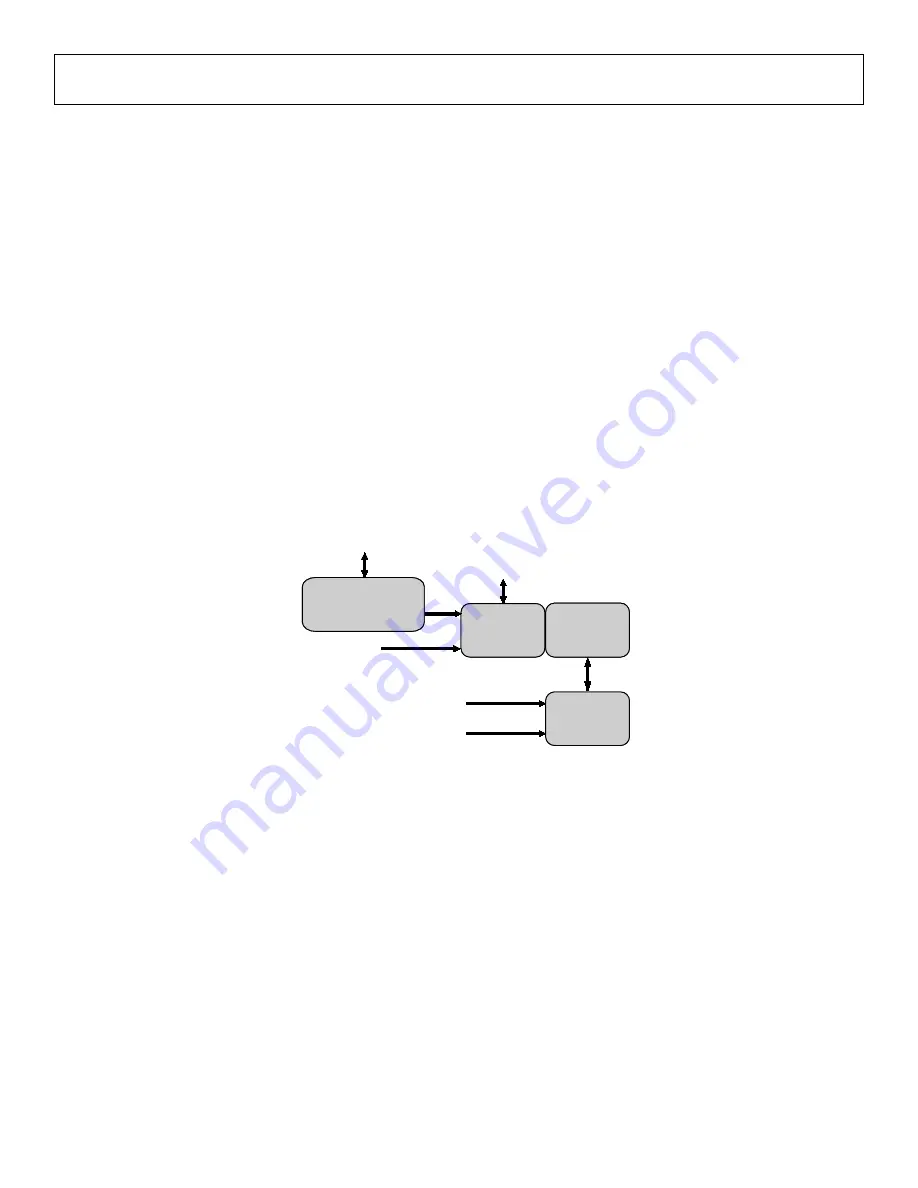
UG-707
ADV8005 Hardware Reference Manual
can downscale from 4k x 2k to 1080p. The PVSP can be employed to further scale the downscaled 4k x 2k content. When using
the PVSP as the primary scaler, the SVSP can also be used to provide a second lower resolution output format. The PVSP and SVSP can be
connected in parallel or in series.
The
features a number of video enhancement controls such as detail enhancement, block noise reduction, mosquito noise reduction
and random noise reduction. Block and mosquito noise are related to the compression of video for transmission or encoding onto a DVD or BD
disc. Random noise is related to noise picked up during the transmission of video. The automatic contrast enhancement feature offered by the
intelligently stretches the brightness of an image to enhance the dark areas without saturating the dark areas.
Note that the dual scaler variants of the
are the following:
•
ADV8005KBCZ-8A/8N
•
ADV8005KBCZ-8C
The single scaler variants of the
•
ADV8005KBCZ-8B
1.1.4.
Bitmap On Screen Display
The
incorporates an OSD core capable of generating an internal bitmap based OSD. Customers can generate elaborate OSD designs
that can include bitmap images, 3D overlay and animation. Up to 256 regions in total can be created and displayed. These 256 regions are bitmap
images defined during the design stage and can be characters, pictures, buttons, and so on. Individual regions can be alpha blended and
prioritized versus other regions.
Figure 4:
Bitmap OSD
The OSD is controlled by the host microcontroller via the
SPI slave (serial port 1). In response to commands, the
data from the external SPI flash memory via the SPI master (serial port 2). The
uses DDR2 memory when rendering and blending
the OSD. In order to lower the load of the DDR2 memory, there is a block in the
OSD hardware called the OSD co-processor. The
OSD co-processor is responsible for handling upper level commands from the microcontroller and translating them into lower level operations
for the OSD and DMA which retrieves data from the external DDR2 memories.
The OSD blend can be switched between either of the two video streams routed through the OSD blend block without disturbing the output
video. This enables seamless OSD blending in dual zone systems.
Bitmap OSDs can be created and compiled using ADI’s software development tool,
Blimp OSD
. This allows users to create their custom OSDs
and emulate them before integrating them into their system, abstracting the design task from the underlying OSD hardware. For more details
on the operation of the external OSD, design and system techniques, refer to the
Blimp OSD
documentation.
OSD Build OSD Scaler
OSD Blend
Video
External OSD
DDR2
OSD Build OSD Scaler
OSD Blend
Video 1
External OSD
DDR2
Video
Video 2
Internal
OSD Generator
SPI
Rev. A | Page 18 of 317
















































